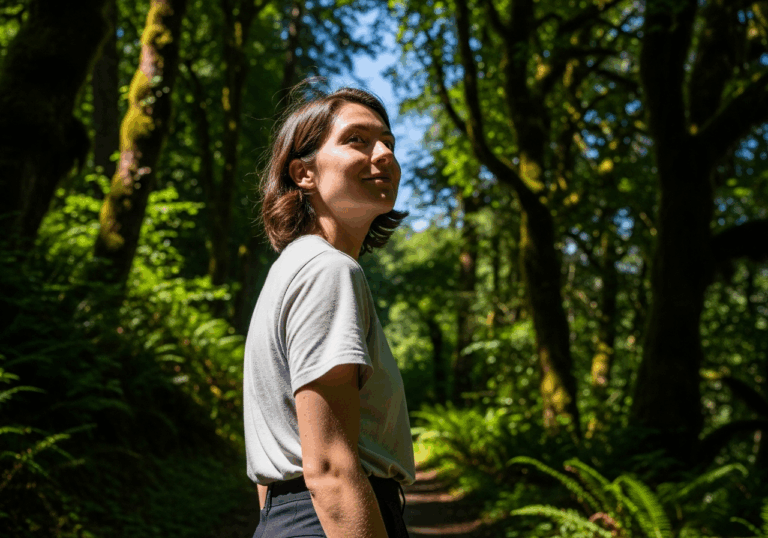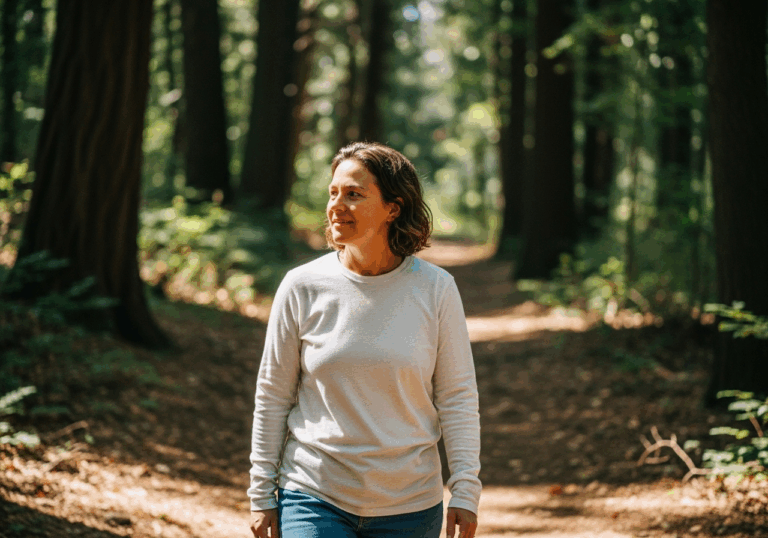Science-Backed Tips
Forest Therapy Lowers Blood Pressure in Seniors
Guided forest bathing reduces systolic and diastolic pressure by 10%
📊 Did you know?
💡 Why It Matters
1️⃣
Lowering blood pressure can reduce the risk of cardiovascular diseases, which affect over 30% of seniors.
2️⃣
Improved mood through relaxation can enhance quality of life and mental health in older adults.
3️⃣
Nature exposure has been linked to decreased stress levels, potentially lowering healthcare costs associated with chronic stress.
✅ Try These Micro-Tips
🎯
Participate in a guided forest therapy session at least once a week.
🎯
Spend 30 minutes in a natural setting, focusing on your five senses.
🎯
Engage in mindful breathing exercises while surrounded by nature for 10 minutes.
🎯
Join a local forest bathing group to enhance social connections and support.
📚 The study
Moreover, the calming influence of nature not only supports physical health but also uplifts mood, contributing to a better quality of life and improved mental well-being.
As exposure to nature has been linked to lower stress levels, this innovative approach to health could potentially reduce healthcare costs associated with chronic stress. The study, conducted by Garibay-Chávez et al. (2024), highlights the importance of integrating nature therapy into wellness programs for seniors, emphasizing that simple activities like forest bathing can lead to profound health benefits.
By fostering a connection with nature, we can enhance the overall health and happiness of our aging population, making forest therapy an essential practice for promoting longevity and vitality in older adults.
❓ Frequently Asked Questions ❓
Learn more
What is guided multi-sensory forest therapy?
Guided multi-sensory forest therapy involves structured sessions in a natural setting that engage the five senses. It aims to promote relaxation and improve overall well-being, particularly in older adults.
How does forest therapy affect blood pressure in older adults?
Research shows that guided forest therapy significantly reduces both systolic and diastolic blood pressure in older adults. This reduction can lower the risk of cardiovascular diseases prevalent in this age group.
What age group benefits most from forest therapy?
The study focused on participants aged 60 to 77, indicating that older adults can significantly benefit from forest therapy. This age group often faces higher risks of cardiovascular issues, making such interventions crucial.
How long should one spend in nature for effective results?
Participants are encouraged to spend at least 30 minutes in a natural setting to experience the benefits of forest therapy. This duration allows for adequate engagement with the environment and sensory experiences.
What are the mental health benefits of forest therapy?
Forest therapy has been linked to improved mood and reduced stress levels, enhancing overall mental health. The calming effects of nature can lead to a better quality of life for older adults.
Can forest therapy help with chronic stress?
Yes, exposure to nature through forest therapy can decrease stress levels, which may help mitigate chronic stress. This reduction in stress can potentially lower healthcare costs associated with stress-related conditions.
What activities are involved in a forest therapy session?
Activities in a forest therapy session may include mindful breathing exercises and sensory engagement with the natural environment. These activities are designed to promote relaxation and enhance the therapeutic experience.
How often should one participate in forest therapy?
It is recommended to participate in a guided forest therapy session at least once a week for optimal benefits. Regular engagement can reinforce the positive effects on mood and cardiovascular health.
What is the significance of the study’s findings?
The study highlights the direct impact of nature on mood and circulatory health in older adults. By demonstrating significant reductions in blood pressure, it underscores the importance of nature-based interventions for this demographic.
How can one get involved in forest therapy?
Individuals can join local forest bathing groups or participate in organized sessions to experience the benefits of forest therapy. Engaging with a community can also enhance social connections and support.





